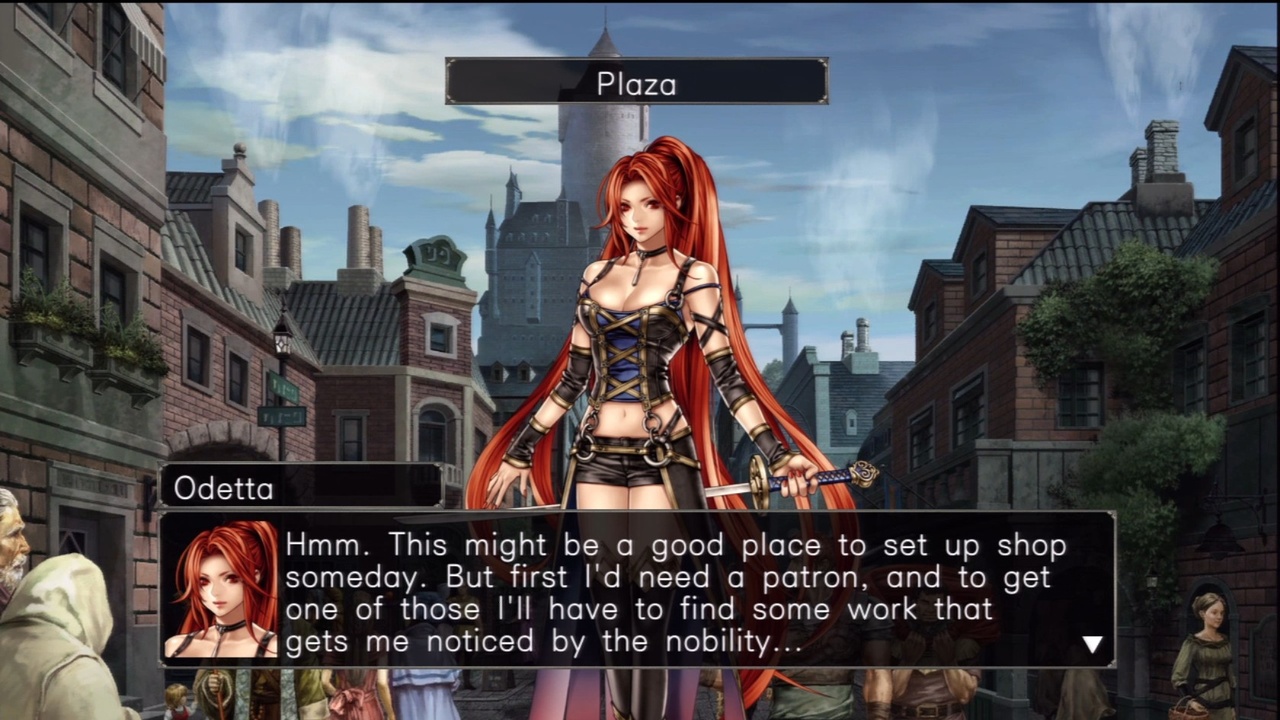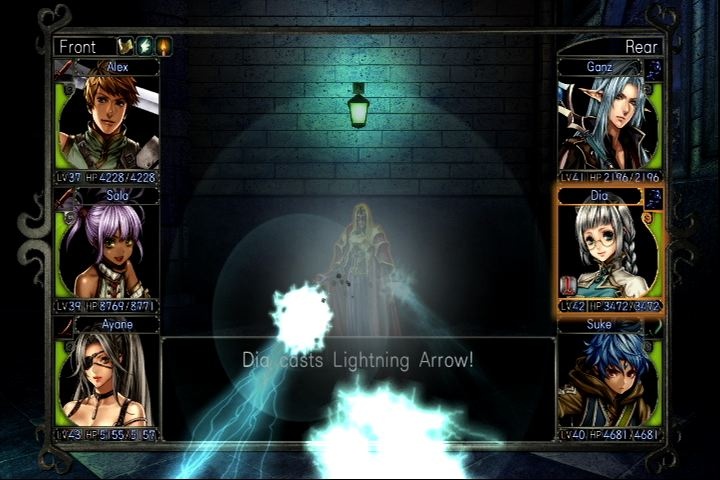Get out the graph paper. You just might need it in Wizardry: Labyrinth of Lost Souls, an old-fashioned dungeon crawler for the PlayStation Network so true to its roots that it lacks an automap feature and just about every other amenity of a modern role-playing game. This slavish attention to detail is both the biggest strength and the biggest weakness of the game. Developer Acquire has stuck so closely to the RPG formula circa 1990 or thereabouts that you might love the game for its evocation of nostalgia, in spite of its archaic graphics, sound, and mechanics. You can't argue about Acquire meeting its goals here, however, because this game is so true to the RPG experience as it was two decades ago that you might as well be playing it on a Commodore Amiga instead of a PlayStation 3.

If you have ever played any classic dungeon crawlers like Dungeon Master for the late, great Atari ST and the Eye of the Beholder series for the PC, or gotten into any of the modern revivals, such as The Dark Spire and the Etrian Odyssey franchise for the Nintendo DS, you will immediately know what you're in for here. Wizardry: Labyrinth of Lost Souls is a straight-up single-player dungeon trek. It pits a traditional six-member party of adventurers against all of the Dungeons & Dragons-inspired horrors that can be found in an eerie underground maze of caverns, chambers, and catacombs. Everything is basic. You roll up a party by tweaking skill stats and choosing classes from a list of mostly traditional fighters and mages, with a couple of oddballs like the samurai and ninja thrown in for good measure. You access various adventurer-accommodating features in a city represented by simple menu choices that instantly port the party to an inn for resting, a temple for healing, a shop for buying and selling items, a guild for accepting quests, and so forth. And you venture into a couple of many-floored dungeons to kill monsters for fun and profit.
The two dungeons in the game are moved through step-by-step with the party en masse, with the dungeon before you shown via a first-person camera. Three fight-friendly adventurers are in the front row and three ranged- or magic-combat specialists are in the back row. When you push the D pad forward, the party moves one step forward; when you push the D pad backward, the party moves one step backward; when you push the D pad sideways you turn in the indicated direction. Dungeon levels are simple mazes laid out with brick-lined walls, rocky caverns, and the like. Every square looks pretty much the same, unless you encounter a door, a treasure chest, some kind of special creature like a ghost or non-player character, or are swept off into a fight with monsters. There is no automatic mapping function here, which makes finding your way around extremely challenging. You can buy maps and deal with this in various other ways, but at times, you need to either resort to graph paper or a really uncanny sense of direction. An automap that can be turned on and off would have been a better solution here, letting more casual players get into the game without the hassle of manual mapping and using the limited in-game maps.
When you run into bad guys, you generally have a choice of either fighting or fleeing. Battles are turn-based and extremely simple. Each party member fights or casts a spell each turn until the monsters go down or the entire party bites the dust. Fighting is rather unforgiving. In the early stages, you have garbage equipment and weapons like cloaks and daggers, so you are vulnerable to being smacked around by a gang of kobolds. Leveling up is a fairly measured process, and you need to do a lot of killing and exploring to scrounge up the gold needed to upgrade gear. Still, it's all strangely addictive. The whole game is a level grind, and quite repetitive in the style of old-time RPGs, but the grim nature of the surroundings and the extremely focused "see monster, kill monster, loot dungeon" nature of what you're doing keeps pushing you forward. Tough battles provide a good challenge to egg you on, as well. Even the lack of an automap feature helps immerse you in the game, because you need to really pay attention to what you're doing to even find your way in and out of the dungeons.

With all that said, it is hard to quantify the appeal of a retro game like this. Part of the reason you keep playing is the thrill of exploring ever-deeper dungeon levels and seeing what else there is out there to try and kill. Despite the minimalistic visuals, sticking around to see what lies around the next darkened corner is a big part of the attraction. The stark visuals are entirely in keeping with the retro theme, of course, although the backdrops are perhaps a little too dark, even when you have assistance in the form of a spell. The anime character art is also a bit extreme in spots, with some of the big-eyed female heroes dressed in risque outfits that are wholly inappropriate for exploring a dungeon stocked with goblins and dragons. Creatures are more appropriately drawn, although they are represented by flat, mostly unmoving models that don't have a great deal of detail. There are a lot of different types of monsters, ranging from floating evil coins and orcs to dragons and demons, but all you see of them are simple little figures that don't have a great deal of visual impact.
Audio is also pretty rough and ready. The generic music could have been composed, if not recorded, during the 8-bit era. Battle effects are equally old school and made up of basic sword clashes and groans. All of the vocals seem to have been carried over intact from the Japanese version of the game that was released back in 2009. This works with the anime character art, but it isn't so pleasing to the ear. Most of the lines are high pitched and involve various squeals. The collective gasp when you navigate the party into a wall is hilarious, at least.
Wizardry: Labyrinth of Lost Souls is one uncompromising game. To really appreciate this sort of RPG, you need to be either someone who fondly remembers the good old days or someone who has always wanted to take a trip back in time to the dungeon crawlers that dad used to play. As such, it's either a good game or an awful one depending on your perspective. But the developers have clearly succeeded in their efforts to turn back the clock for the nostalgia-minded, so you have to admire the effort and the end results, even if you can't fully get into its old-time atmosphere.
Editor's Note: This review previously contained erroneous information about character portraits being impossible to turn off when they make it difficult to see where you're going in dungeons. GameSpot regrets the error.